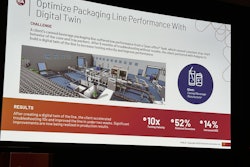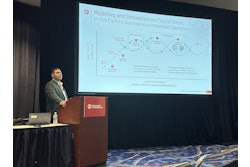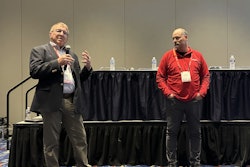
President Obama’s reelection has been hailed as the best run campaign ever and corporations are scrambling to adopt its tactics and strategies. That quest isn’t based on party affiliation or on one’s feelings about the election results; rather, it’s based on the potential for a competitive advantage. Among the corporate crowd are consumer packaged goods companies. That being so, adoption of success-hardened tactics and strategies will affect the development and marketing of packaged goods. The focus of this article is on the package component, although allowing for the unavoidable crossover into product-related issues.
Actually, politics and business have borrowed from each other for some time; for example, we speak of a political party’s “brand” and the “packaging” of a candidate. Both business and politics are concerned with demographics, segmented into targeted consumers and voters, respectively. Products and services are offered to the former and candidates and their platforms to the latter. So, the business-politics parallels aren’t new. But when one side performs at revolutionary levels, the other side is sure to try to adopt those winning ways.
What’s caught the attention of most corporations is how tech-savvy the Obama campaign was, in particular its use of the internet and social media. These days, it’s inconceivable for a corporation not to have a website; moreover, many (if not most) corporations have a presence on Facebook and Twitter. But rare is the corporation that’s so tech-savvy as to leave the competition bested and looking outmoded. On-line activities are such an integrated component of our society and culture, carrying over onto consumer behavior. And it’s not limited to on-line purchases; for purchases made at brick-and-mortar locations often are the results of on-line exposures.
Theoretically, then, the corporation that mines the data riches of computer-based technology will be able to develop social and purchasing profiles and be able to overlay them for consumer insights of vast depth. It’s the equivalent of an optimal melding of demographics, psychographics, and ethnographics, explaining who purchases, why they purchase, and how they live with their purchases. One hardly needs convincing that such abilities would be a boon to packaging design and development; after all, packaging is the physical embodiment of the product’s/brand’s aura, those tangibles and intangibles that distinguish (for better or worse) one company’s offerings from those of the competition.
The failure rates for new product launches are well documented. That’s why corporations that have successful brands are more likely to leverage them with brand extensions than to roll the dice with new products. But there’s only so such elasticity in any given brand and there is a tipping point at which there’s damage to that brand’s credibility. New product development can’t be put off indefinitely; unfortunately, even many supposedly new products are too “me-too” or otherwise lack the novelty to generate consumer loyalty. Packaging, despite its versatility, shouldn’t be expected to compensate for a deficient product concept. It all makes for a strong argument in favor of going hi-tech to reduce the risks inherent in product/package development.
The interdisciplinary nature of packaging suggests a good starting point: evaluation of how effectively the many informational sources that affect packaging are inputted to a database that collates them in ways that facilitate analysis and actions. Some companies lack a database that has a sufficient number of tentacles; for example, it might not be tied into an 800 number whereby consumers are to call in comments and complaints. There should be means for categorizing those that are packaging-related and making sure that they can be analyzed for trends and opportunities.
Granted, national political campaigns are suffused with obscene amounts of money, unmatchable by even most very large corporations (Apple excluded). That doesn’t mean that increasing the dividends received from investments in technology is beyond the financial means of most corporations. Even so, before writing checks for specialized hardware and software, corporations should determine how they might improve their technological operations for little or no costs. Take, for example, improving the navigability of a website. Corporations know that consumers are receptive to saving time; but any corporation that builds time-saving features into its products and packaging but not as much into its website is being contradictory. Here’s a related example: corporate sustainability programs don’t necessarily lend themselves to quick explanation; therefore, being able to distill them for quick comprehension can pay handsomely.
Packaging is a master salesman but it shouldn’t be saddled with more than its share of the promotional load. The internet, in general, and social media, in particular, can provide corporations with a sales force numbering in the millions. The trick is in the recruiting, providing people with positive experiences with a product and motivating them to recount those experiences with members of their social networks. Facebook “friends” might place more reliance on a wall posting than on conventional advertizing, likewise regarding Twitter “followers.” But how is this would-be sales force to be motivated to conduct such sharing? There are situational factors, to be sure; however, what applies in every situation is the need for solid targeting, generated by—you guessed it—hi-tech data.
The generational life of technological advances grows ever shorter, meaning that a corporation can’t afford to stand pat, no matter how current it believes itself to be. The mobile apps market, for example, continues its explosive growth unabated, allowing consumers to take technology wherever they go. It’s been said that packaging is part art, part science; but, whereas science is the component most readily thought of as the beneficiary of hi-tech advancements, the art component also benefits. Any corporation would want every design aspect of its packaging to be based on the best attainable information about the target consumers. Team Obama might have set the bar, but the smart corporations are committed to working on their pole-vaulting skills.
Sterling Anthony is a consultant, specializing in the strategic use of marketing, logistics, and packaging. His contact information is: 100 Renaissance Center- Box 43176; Detroit, MI 48243; 313-531-1875 office; 313-531-1972 fax; [email protected]; www.pkgconsultant.com


























